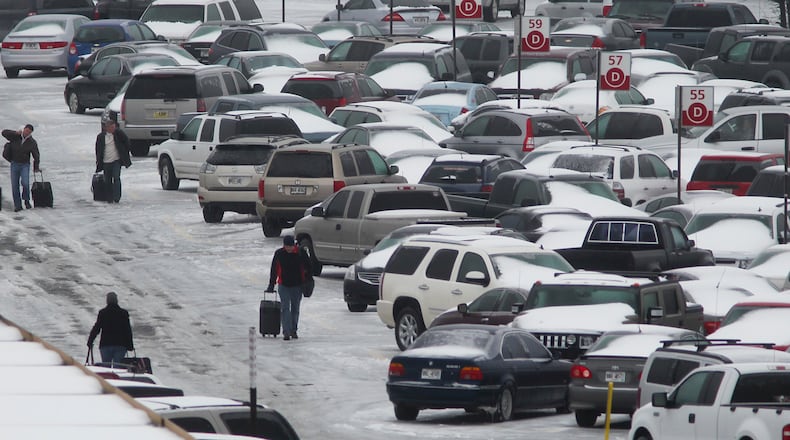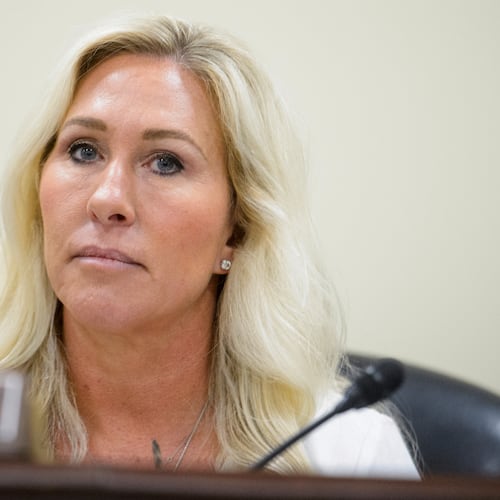When things go badly awry, a natural human response is to ask: What did we do wrong, and how can we fix it?
That’s what Georgia did after the big winter storm of 2011 — with the unhappy results that metro Atlantans experienced this January, when snow fell on a Tuesday afternoon rather than a Sunday night.
A better approach, according to experts in disaster planning, is to ask: What can happen that's not like what just happened, and how can we best deal with it?
As this year’s post-storm task force readies its recommendations, clues suggest that it is moving toward that broader, more imaginative approach — but in fits and starts, the hard way.
Looking forward is tougher and more expensive than looking back. It requires not only creating scenarios but testing and refining them over time. But experts say the investment pays off.
“Ultimately, the plan is not as important as the planning process,” said James Kendra, director of the Disaster Research Center at the University of Delaware. “It’s the planning process that builds the ability for organizations to imagine particular outcomes.”
Henry Willis, director of the Homeland Security and Defense Center at the Rand Corp., said much the same.
“The better plans have gone through what I’ll call a what-if exercise,” Willis said, “where they really try to push out the thinking about what could possibly happen.”
Learning the hard way
No one is perfect at emergency weather planning, but the Louisville, Ky., area is pretty good, Willis said.
Louisville came by its expertise the hard way, too, through botched responses to winter storms and tornadoes.
“We don’t have a lot snow, but we do get snow and it cripples us,” said Doug Hamilton, chief of public services in the Louisville metro mayor’s office (the city and county share a combined government).
In the 1990s, a major winter storm had made the stakes clear. More than a foot of snow preceded by a half inch of ice “brought us to our knees for four days,” Hamilton said. The area’s largest employer, UPS, threatened to move if they didn’t come up with a better storm response.
The eventual upshot was MetroSafe, a regional emergency management agency that built a unified communications system for emergency responders from a host of local agencies. The region also holds regular disaster planning sessions and emergency drills.
Louisville officials say their planning includes heavy public involvement and is integrated into the regular functions of metro agencies. Everyone involved ultimately reports to a single person, Hamilton.
Each November Louisville has a winter weather exercise where the responder agencies roll out their equipment and do a dry run.
Where Georgia's emergency operations plan concentrates on communicating weather warnings to public officials, Louisville's starts first with warning the public, and doing it fast.
Mistakes still happen: Hamilton still recalls with fury a missed warning of high winds in 2011. But most of the time, the results are visible in the speed with which the region gets up and running after snow and ice storms, he said.
Then and now
Here in Georgia, it’s hard to measure how far the task force appointed by Gov. Nathan Deal has departed from the model of its 2011 predecessor, also created by Deal. That’s because there are almost no records of how the earlier task force operated or how the Department of Transportation and the Georgia Emergency Management Agency came up with the response plans they adopted in the storm’s wake.
Some of those involved no longer work for the state. Those who remain don’t necessarily have a clear recollection of the process. So, if members of this year’s panel wanted to know what types of research and planning were fruitful and which were dead ends, there would be little to guide them.
DOT Commissioner Keith Golden told the AJC that the resulting plans speak for themselves. GEMA preparedness Deputy Director Terry Ball refused to be interviewed.
The resulting response plans focused mainly on specific things that went wrong that year: a lack road clearing resources and procedures, and poor coordination between state and local governments.
This January, the additional sanding and brine trucks proved largely useless. Instead of falling overnight, the snow began at midday, and a surge of panicked, home-bound commuters turned key roads into ice-covered parking lots. Nobody had talked effectively to the public, warning folks to stay home.
When snow returned in February, officials warned them with a vengeance. With no one on the roads, DOT was able to clear two passable lanes on most interstates within two days.
That was absolutely an improvement, but it doesn’t answer the larger question going forward. Which is: To what degree have state and local officials moved beyond the phenomenon known as “fighting the last war”?
Hope and qualms
There is reason for optimism. The 33 task force members are high-powered leaders in business and government, positioned to know the issues. They have brainstormed hard.
On the downside: high-ranking people don’t have much time. The meeting scheduled for Thursday is expected to be the group’s last.
And most brainstorming was done in sub-groups restricted to a single area of expertise: transportation officials in one group; state agency heads in a second; weather experts in a third, and so on.
Siloed thinking is one thing planning experts warn against. Another is the urge to be efficient rather than creative.
Kendra, the Delaware researcher, has relatives in the Atlanta area and followed the January mess from afar.
If he had been in charge of the task force, he would have made its membership even wider. He was taken aback that responders like the Red Cross aren’t on it. He would also have included public meetings and public input.
Bart Gobeil, Deal’s chief operating officer and chairman of the task force, said non-members were welcome to attend and add their thoughts, but the task force size had to be “manageable.”
To which Kendra said: “That’s what subcommittees are for.”
Practice, practice …
More importantly, Kendra said, is a notion that’s a sort of mantra among emergency planners: Brainstorming is good, but exercises are key.
“The purpose of exercising isn’t just to go through a particular type of disaster plan,” Kendra said. “It should ideally be opportunities for thinking of contingencies, building new connections, and really to reveal vulnerabilities or things you haven’t thought of before.”
Gobeil said that although the task force has not undertaken exercises itself — they can take months to put together — it will issue recommendations that are likely to include exercises.
“We need to, obviously,” Gobeil said, citing the “muscle memory” that comes from such work.
It can be tough, though, to implement sweeping new imperatives for better planning, especially in an area where authority is splintered among dozens of local governments.
By contrast, the city of Louisville and Jefferson County merged their governments in 2003. So when the need for better disaster response became clear, the metro mayor was able to say, "'I'm going to do this," Hamilton said.
Then there’s the cost, not just of supplies but of hands-on exercises. Georgia’s weather response investment has inched up disaster by disaster, to $14.5 million in this year’s state budget.
“Yes, it costs a lot of money,” Hamilton said. But it costs something else when emergency response falls short, he said. “How much did (Georgia’s leaders) lose in their integrity, the confidence of the citizens that they can handle anything unusual?
“Look at the economic development loss,” he said. “Look at the loss of business of sales. Look at the loss of people who said, ‘You know I was thinking about (investing in) Atlanta, but I don’t think so.’”
About the Author
Keep Reading
The Latest
Featured




